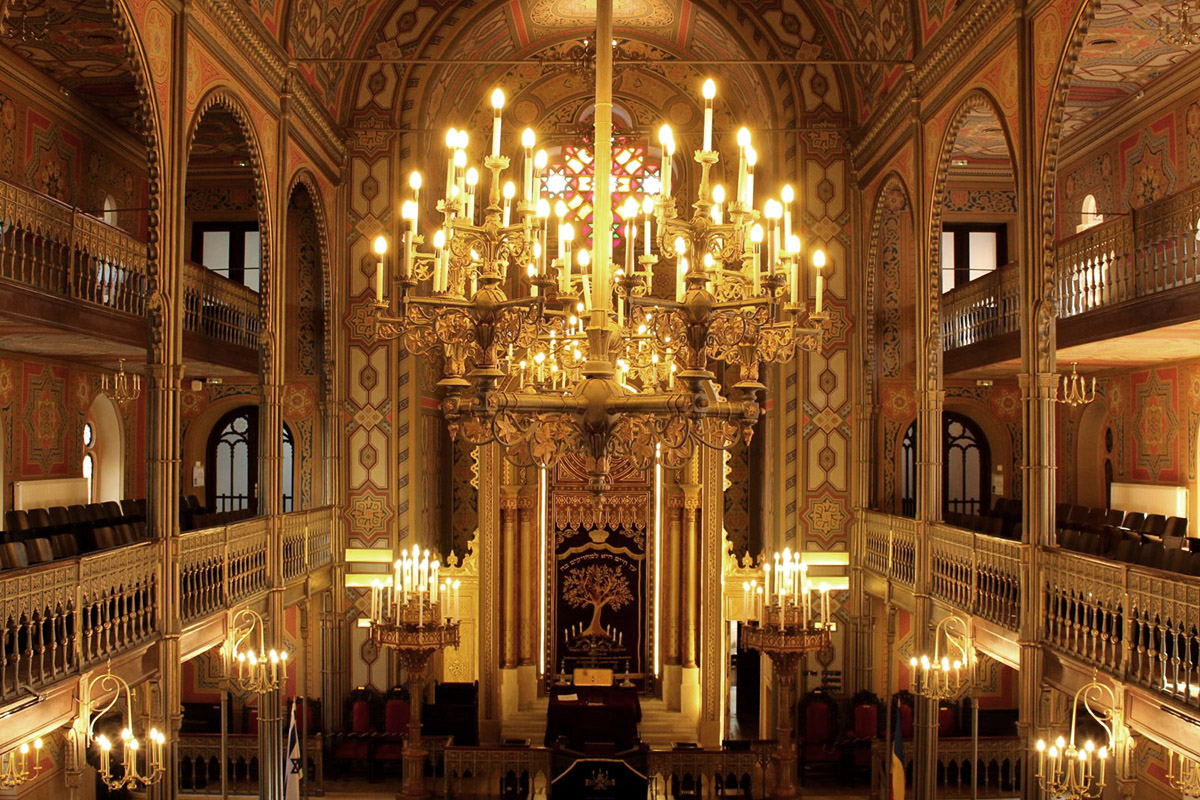The Choral Temple
9 Sfânta Vineri Street, Bucharest

The Choral Temple in Bucharest, the largest Mosaic place of worship in the city, was built between 1864 and 1866, in the neo-Moorish architectural style, on an area of 448 square meters, and is a faithful replica of the splendid Leopoldstädter Tempel synagogue built in 1858 in Vienna, but destroyed by the Nazis. The initiative to build this temple belonged to Isaac Leib Weinberg, a Polish Jew from Bucharest, one of the leaders of the “Community of Modern Israelite Worship” in Bucharest. The building project was designed by Viennese architects I. Enderle and G. Freiwald.
A fire on the building delayed the inauguration of the temple because of Romanian nationalists protesting against the granting of Romanian citizenship to Jews.
In June 1866, the government withdrew the article on Jewish citizenship from the draft constitution and the temple was rebuilt with the help of the Royal House of Romania.
The name of the temple comes from the term “choir”. A synagogue does not normally have a choir, but in the rare case when it does, it is called a "choral" temple. It is the only synagogue in Romania that still has a choir, and there are about 100 choral temples worldwide.
The temple was restored between 2006 and 2014.